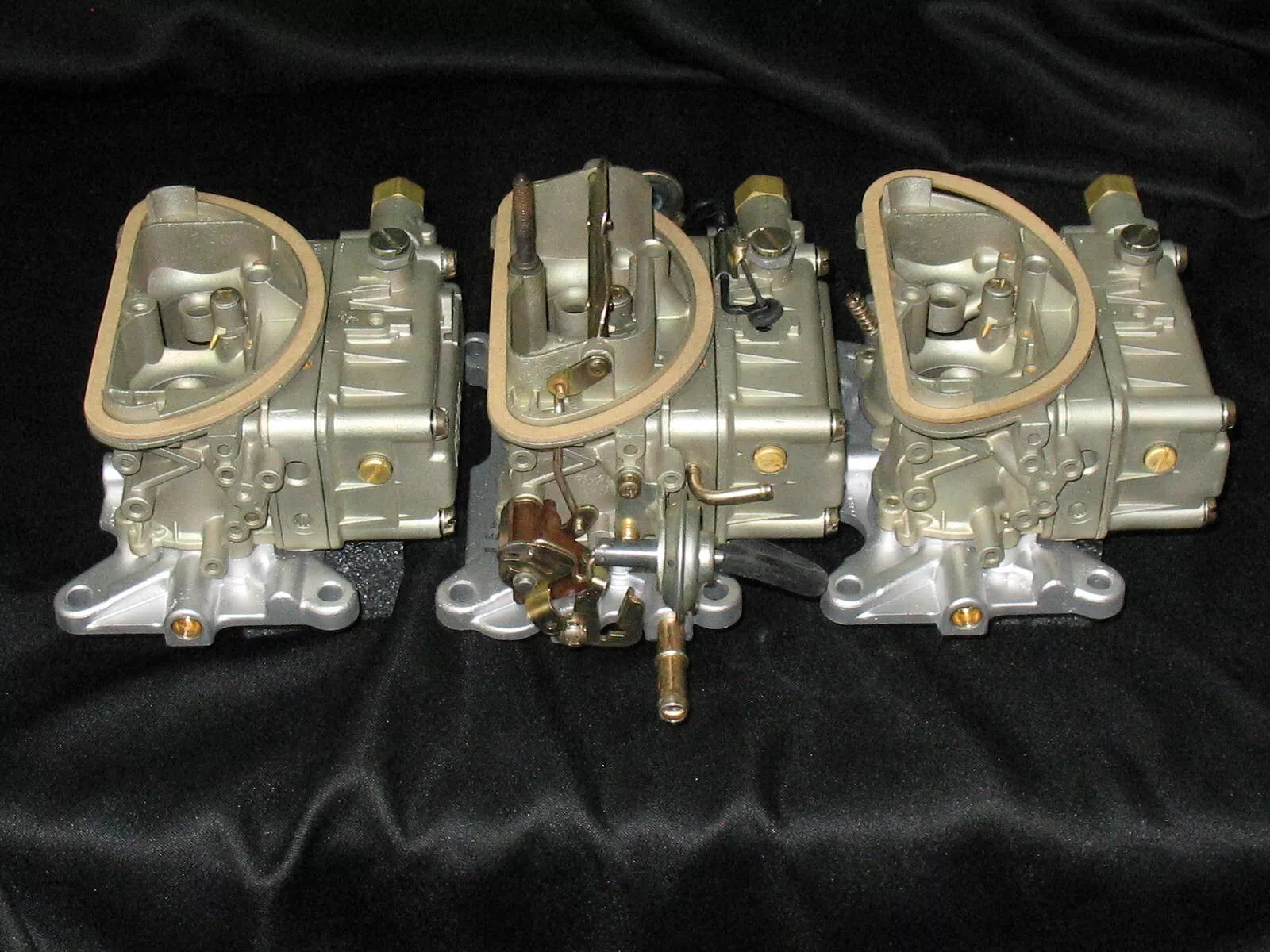When Ashton Kutcher’s classic 1966 Corvette broke down, we couldn’t help but think, “It’s probably the carburetor!” While we don’t know for sure, seeing this kind of issue firsthand many times, carburetor problems often cause the exact kind of trouble Kutcher faced. As a proud Corvette owner himself, he knows the quirks that come with owning such a classic. Let’s explore what could have been happening under the hood.
Parts of a Carburetor in the 1966 Corvette and How to Spot Issues
In the 1966 Corvette, the carburetor is key to maintaining the engine’s air-fuel ratio. Here’s how each part works and how you can identify if it needs attention:
- Throttle Body: Controls airflow to the engine. If your car hesitates or accelerates poorly, the throttle body might need cleaning.
- Fuel Jets: Spray fuel into the airstream. Blocked jets often cause rough idling or stalling, as the engine isn’t getting enough fuel.
- Float Chamber: Maintains a stable fuel level. If your engine sputters or dies when accelerating, the float might be stuck.
- Needle Valve: Regulates fuel flow into the float chamber. Difficulty starting or poor fuel efficiency could mean the needle valve is worn.
- Choke: Adjusts air-fuel mixture during cold starts. If your car runs rough until it’s warm, the choke might need adjustment.
Common Carburetor Problems in Classic Cars
Comparing other classics of the era, such as the Ford Mustang or the Dodge Charger, carburetor issues were a common problem. Here are some typical carburetor-related issues across different models from the 1960s:
- Chevy Corvette (1966): Owners frequently report stalling due to clogged jets and poor fuel flow.
- Ford Mustang (1965-1966): Choke problems are common, especially in cold weather, making the car difficult to start.
- Dodge Charger (1966-1967): These models often suffer from rich fuel mixtures, causing black smoke and inefficient fuel use.
Carburetor wear is a frequent issue for muscle car owners, and without regular maintenance, it can cause stalls like Ashton Kutcher experienced. Classic cars, like Kutcher’s 1966 Corvette, rely on carburetors to regulate the air-fuel mixture, and as these components age, they can become clogged or unbalanced. For example, many 1960s muscle cars—such as the Ford Mustang and Dodge Charger—often suffer from rough idling or stalling due to fuel delivery issues in their carburetors. Without consistent tune-ups, small issues like a sticky float or dirty jets can lead to inconvenient breakdowns.
Consider a scenario where a driver in a restored 1967 Mustang encounters frequent stalling in traffic. A quick feathering of the throttle may keep it running momentarily, but these temporary fixes only highlight a need for carburetor servicing. A similar situation might happen with a 1969 Dodge Charger, where the owner faces hesitation and engine sputtering due to an imbalanced air-fuel ratio. This is where rebuilding or restoring the carburetor becomes crucial to long-term performance.
For classic car enthusiasts like Kutcher, who appreciate the beauty of vintage vehicles, proactive maintenance—like rebuilding the carburetor—can help avoid such roadside mishaps and keep these classics roaring smoothly on the road.
What Ashton Could Have Done to Get Back on the Road Faster
While Ashton Kutcher managed to get his Corvette running again, here are some things he could have done quickly, right on the side of the road, without tools:
- Pump the Gas Pedal: If the carburetor isn’t delivering enough fuel, a few pumps of the gas pedal can help get more fuel into the system, especially during cold starts.
- Feather the Throttle: Keeping the engine running by gently pressing the throttle can help prevent stalling if the mixture is too lean.
- Adjust the Idle: If the engine stalls at idle, slightly raising the idle speed by hand on the throttle linkage might prevent stalling until you can properly diagnose the issue.
Additionally, it is prudent to check the following when you get back to your garage, and have tools in hand.
- Clean the Fuel Jets: If his engine was sputtering or stalling, cleaning the jets would have ensured fuel was flowing smoothly again.
- Check the Float: Tapping the float chamber gently could free a stuck float, restoring fuel flow and getting the car started.
- Adjust the Choke: For hard cold starts, adjusting the choke lever would help create the proper air-fuel mix.
These quick fixes can often be performed roadside and could have saved him from pushing his car—though kudos to him for handling it all himself!
Restore Your Classic’s Carburetor with Custom Rebuilt Carburetors
At Custom Rebuilt Carburetors, we’ve been rebuilding, restoring, and fine-tuning carburetors since 1979. Whether you’re driving a 1966 Corvette, a Ford Mustang, or any other classic muscle car, our experts can breathe new life into your carburetor. Don’t wait for a roadside breakdown like Ashton Kutcher—get your carburetor restored today!
Did you know?
- that carburetors were the primary fuel delivery system for almost all American muscle cars until the late 1980s, before fuel injection became standard? This includes iconic cars like the 1966 Corvette, Ford Mustang, and Dodge Charger.
- that Holley carburetors, a popular choice for muscle cars, were first introduced in the 1950s and are still used in high-performance engine builds today? They’re known for their reliability and ease of tuning, making them a favorite among racers and restoration enthusiasts.
- that one of the most common carburetor issues in classic cars is a vacuum leak? These leaks can cause poor idling, stalling, and hard starts—symptoms often mistaken for other engine problems.
- that Quadrajet carburetors, often found in 1960s GM cars, are highly tunable for fuel efficiency and power? Many enthusiasts enjoy the challenge of fine-tuning them to maximize performance in their classic Chevys and Pontiacs.
- that carburetors can be modified to improve performance? Many muscle car owners opt to swap out the factory carb for a larger or more finely-tuned model, such as an Edelbrock, for enhanced acceleration and throttle response.



